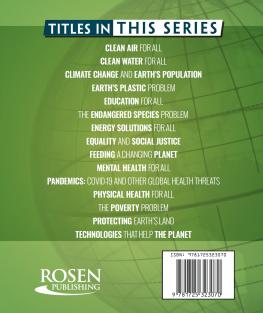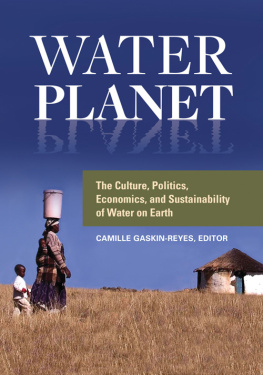THE MENAHEM STERN JERUSALEM LECTURES
Sponsored by the Historical Society of Israel and published for Brandeis University Press by University Press of New England
Editorial Board:
Prof. Yosef Kaplan, Senior Editor, Department of the History of the Jewish People, The Hebrew University of Jerusalem, former Chairman of the Historical Society of Israel
Prof. Michael Heyd, Department of History, The Hebrew University of Jerusalem, former Chairman of the Historical Society of Israel
Prof. Shulamit Shahar, professor emeritus, Department of History, Tel-Aviv University, member of the Board of Directors of the Historical Society of Israel
For a complete list of books in this series, please visit www.upne.com
Sanjay Subrahmanyam, Three Ways to Be Alien: Travails and Encounters in the Early Modern World
Jrgen Kocka, Civil Society and Dictatorship in Modern German History
Heinz Schilling, Early Modern European Civilization and Its Political and Cultural Dynamism
Brian Stock, Ethics through Literature: Ascetic and Aesthetic Reading in Western Culture
Fergus Millar, The Roman Republic in Political Thought
Peter Brown, Poverty and Leadership in the Later Roman Empire
Anthony D. Smith, The Nation in History: Historiographical Debates about Ethnicity and Nationalism
Carlo Ginzburg, History Rhetoric, and Proof

Brandeis University Press /
Historical Society of Israel
An imprint of University Press of New England
www.upne.com
2011 Historical Society of Israel
All rights reserved
Manufactured in the United States of America
University Press of New England is a member of the Green Press Initiative. The paper used in this book meets their minimum requirement for recycled paper.
For permission to reproduce any of the material in this book, contact Permissions, University Press of New England, One Court Street, Suite 250, Lebanon NH 03766; or visit www.upne.com
Library of Congress Cataloging-in-Publication Data appear on the last printed page of this book.
5 4 3 2 1
For Ashok Yeshwant Kotwal
Illustrations
MAPS
FIGURES
Foreword |  | DAVID SHULMAN |
There was a time, some five centuries ago, when restless Europeans headed east, as did many enterprising Iranians, and curious North Indians set out either for Central Asia or for the wild and barbarous lands of the Marathas, Tamils, and Telugus to the south. Most of them were men, though there were also some colorful, adventurous, polyglot women like Nicol Manuzzis English-Portuguese wife, Elisabetta Hardeli (or Elizabeth Hartley). The majority of the Europeans were driven lets face it by sheer greed, sometimes masked by an assumed missionary zeal or a taste for political intrigue. Some, however, were genuinely curious about the exotic cultures into which they had wandered, although even among this latter group there were figures like Manuzzi who, having miraculously survived some six decades in India, came to detest the place and its peoples. Homesickness, the intimate shadow of wanderlust, affected all of them to some degree and became a predictable topos in their records and letters. Pravara, the prototypical, middle-Indian hero of the sixteenth-century Telugu poet Peddanas novel The Story of Man, though consumed by a burning desire to see the remote places he has heard about, is unable to get through even a few hours in the Himalayas before desperately looking for a safe route home. For most adventurers of the sixteenth through nineteenth centuries, home was a place very far away.
Every one of these individuals carried with him or her a set of mental maps, usually fuzzy and unsystematic and full of gaps, often also dogmatic and condescending, about the outlandish cultural worlds to be encountered. In the works they have left us travelogues, memoirs, endless letters, histories and pseudo-histories, rudimentary ethnologies, diaries we find the not unreasonable presupposition that people back home are dying to hear the often self-aggrandizing account of the would-be heros adventures and more than eager to learn about the peculiar ways of the distant East or North or South. In any case, the urge to report is a staple feature of this vast literature, in which a host of tricksters, charlatans, and operators try, usually unsuccessfully, to hide the true nature of their careers, and the borderline psychotics generally sound, well, insane.
One way to write the history of those centuries is to tell the story of those intersecting mental maps, which, naturally, tended to evolve along highly patterned lines and sequences. Such an integrated work would be one form of what Sanjay Subrahmanyam has aptly called connected history (he has published two remarkable collections of essays under this rubric). Connected history envisions a world so densely textured, so profoundly interlocking in causal processes, that even a slight shift at one point will produce change at many other points a version of the so-called Butterfly Effect (if a butterfly flaps its wings in Beijing in the spring, by late summer hurricane patterns in the Atlantic will be affected). Over a thousand years ago, a school of Indian logicians, the Nyya-Vaies.ika, discussed the notion of causal connectivity with a subtlety perhaps unparalleled in human civilization. They concluded that such consequential connections depend upon delicate, usually invisible, and always very partial contacts mostly at isolated points between complex entities whose internal composition is invariably altered by the contact; ultimately, such causal connections generate a second-order phenomenon, in the sense that a necessary meta-connectivity comes into being whenever something truly new emerges (they call this connection born from connection, samyogaja-samyoga). Are modern historians capable of offering analyses of a rigor and imaginative density commensurate with such a description?
If they are, they would need to be someone like Sanjay Subrahmanyam, who has recapitulated in his own life most of the geographical trajectories I mentioned at the outset. Born into a family of Tamil Smarta Brahmins, the intellectual aristocracy of India, he grew up in Delhi and was trained, first in economics, then in economic history, in the remarkably effervescent environment of Delhi University in the early 1980s. He has lived and taught in Lisbon, Paris, Oxford, Los Angeles, and Jerusalem, to name but a few of the stations. He speaks flawlessly all the languages that were mother tongues to his sixteenth- and seventeenth-century adventurers (I once saw him learn excellent German in less than six weeks). His early work culminated in a historiographical masterpiece, The Political Economy of Commerce: South India 15001650 (Cambridge University Press, 1990). In that book he focused on early modern southern India seen largely from the intermeshed perspectives of the foreign traders and companies Portuguese, Dutch, Danish, French, and English that established footholds along the coasts of the region. These perspectives have remained stable parts of his oeuvre, but quite rapidly, in his subsequent monographs, the center of attention shifted inland, away from the coasts. An astonishing wealth of source materials in Tamil, Marathi, Persian, Telugu, and other Indian languages came to enrich his narratives, now often more directly political and focused on states and state formation no less than on maverick entrepreneurs and portfolio capitalists. Quixotic adventurers like Yacama Nayaka and Sultan Bulaqi march through Subrahmanyams pages alongside the apparently endless series of homesick travelers I have already mentioned. Often we are allowed to watch these somewhat shadowy figures flit through sources in all the languages of their time, as if reflected from the surfaces of a vast chamber of mirrors, each mirror fashioned in its own, distinctive cultural matrix. Or, to switch the metaphor: the experience is something like watching a performance in the classical Kudiyattam tradition of Sanskrit drama from Kerala: what one sees, in great precision and slow detail, is the continuous, discordant mingling of incommensurate imaginations. This is the true, recurrent subject of Subrahmanyams analysis and the real heart of his historical project. He reveals to us an often bizarre amalgam of diverse mental worlds that, in merging, mostly tend to the tragicomic, the ironic, and the doomed.











